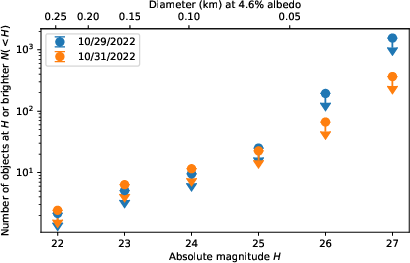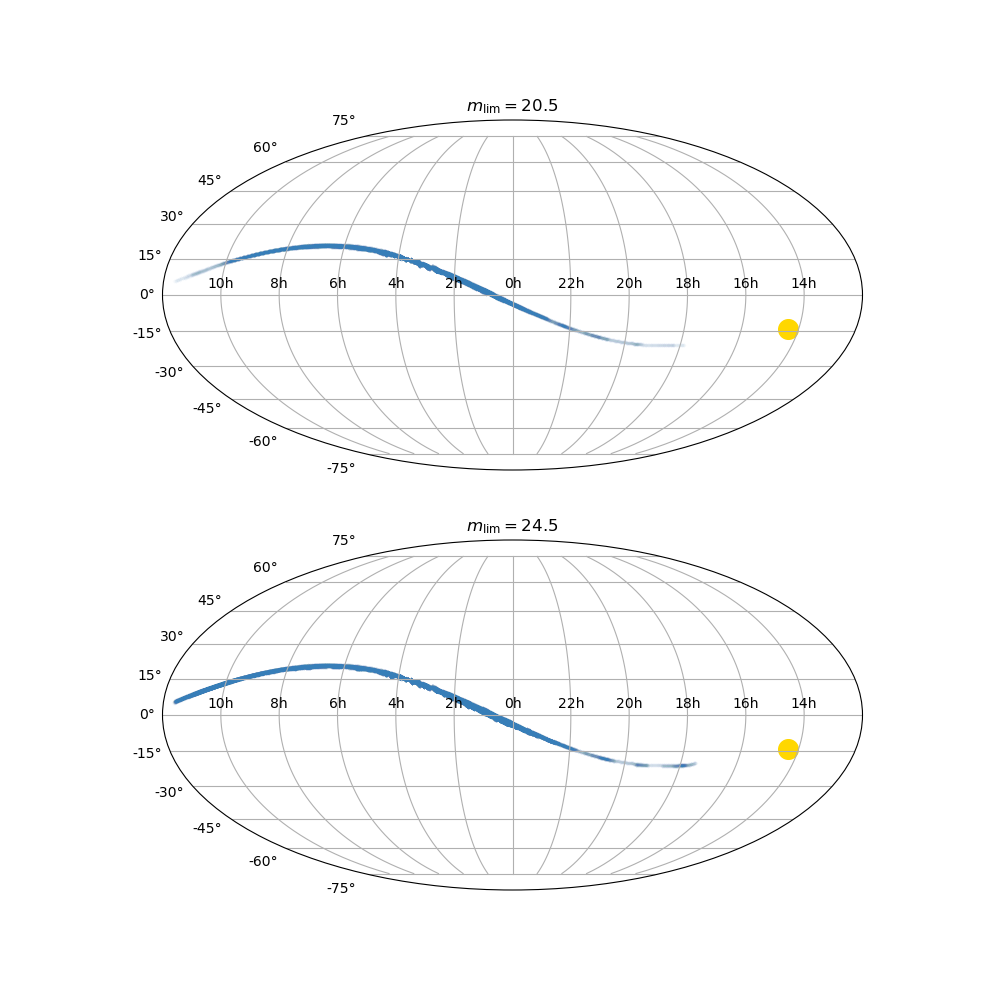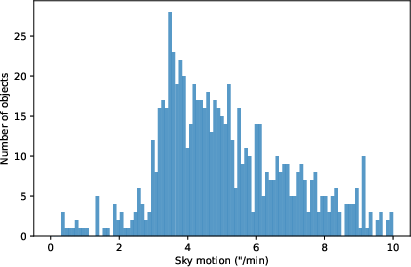- The paper reanalyzes 2022 ZTF data to constrain decameter- to hectometer-scale Taurid Resonant Swarm objects, estimating about 10^2 Tunguska-sized and 10^3 Chelyabinsk-sized bodies.
- It uses a 1600 deg² survey with a limiting magnitude of V∼20 to set robust observational limits on the TRS population.
- The study assesses impact risk and finds that TRS objects pose a negligible hazard, with an estimated impact frequency of less than one event every 4 million years.
Constraints on Small Near-Earth Objects in the Taurid Resonant Swarm
Introduction
The Taurid Resonant Swarm (TRS) represents a dynamically concentrated subset of the Taurid Complex, characterized by a 7:2 mean-motion resonance with Jupiter. This resonance leads to episodic enhancements in the density of meteoroids and potentially larger NEOs along well-defined orbital corridors. While fireball observations have established the TRS as rich in sub-meter-sized particles, the abundance of larger, asteroid-scale objects remains poorly constrained. The present paper reanalyzes data from the 2022 Zwicky Transient Facility (ZTF) campaign to place upper limits on the population of decameter- to hectometer-scale TRS objects and assesses the associated impact risk.
Observational Constraints and Population Estimates
The 2022 ZTF campaign surveyed approximately 1600 deg2 with a limiting magnitude of V∼20, targeting both fast-moving and slower TRS objects. No candidates were detected, enabling the derivation of upper limits on the TRS population across a range of absolute magnitudes (H=22 to $27$), corresponding to diameters from ∼250~m down to $10$~m (assuming an albedo of $0.046$).
The analysis yields upper limits of ∼102 Tunguska-sized objects (∼50~m diameter) and ∼103 Chelyabinsk-sized objects (∼20~m diameter) within the TRS. These constraints are consistent with independent limits from the CFHT campaign and bolide records, supporting the conclusion that the TRS does not host a large population of hazardous, decameter-scale NEOs.

Figure 1: Upper limits of TRS objects at an H range of 22--27 based on ZTF campaign data obtained on the two campaign dates, 2022 October 29 and 31.
The minimum in the population distribution near H∼20−21 aligns with the largest known TRS-associated NEO, 2005 TF50 (H=20.3), suggesting that the constraint is physically meaningful at the upper end of the size spectrum.
Impact Risk Assessment
The impact flux F of TRS objects is estimated using the derived number density n and the collision cross-section σ:
F=nσvg
where vg is the geocentric velocity of Taurid objects. For Chelyabinsk-sized objects (N≲103), the resulting impact frequency is less than one event every 4 million years. This rate is two orders of magnitude longer than the dynamical age of the TRS, indicating a negligible contribution to the current terrestrial impact hazard from TRS objects of this size.
It is important to note that these estimates rely on the assumption that the orbital distribution of TRS asteroids mirrors that of fireball-sized meteoroids. Given the distinct dynamical evolution of larger bodies, this assumption introduces uncertainty that warrants further investigation.
Survey Strategy and Future Prospects
The TRS search corridor during close Earth encounters is a narrow arc (∼2∘ width) encircling much of the sky, necessitating tailored survey strategies. The Figure of Merit (FoM) for TRS searches incorporates effective field of view, limiting magnitude, observation time, and streak-reduction factors. LSST, with its deeper limiting magnitude and optimized field of view, is projected to be 28 times more efficient than ZTF for TRS campaigns.

Figure 2: On-sky footprints of simulated TRS particles on 2022 October 31 at ZTF (mlim∼20.5) and LSST depth (mlim∼24.5).
High sky motion of TRS objects during close approaches presents a detection challenge, as most objects exhibit several arcsec/min motion, leading to streaked images in typical survey exposures. Facilities with larger pixel sizes (e.g., ZTF, LSST) are less affected by trailing loss, but specialized streak-detection algorithms are essential for robust identification.

Figure 3: On-sky motions of TRS objects on 2022 October 31.
Upcoming TRS encounters in 2025, 2026, 2029, 2032, and 2036 coincide with the operational phase of next-generation wide-field surveys, notably LSST. These facilities will enable deeper, more sensitive searches for TRS asteroids, potentially resolving current uncertainties in the population estimates.
Implications and Future Directions
The derived upper limits on the TRS population of decameter- to hectometer-scale NEOs suggest a substantially lower impact risk than previously speculated. The agreement between independent observational constraints and bolide records strengthens the reliability of these estimates. However, the assumption of similar orbital distributions between asteroidal and meteoroidal TRS objects remains unverified and represents a critical area for future research.
Theoretical implications include the need to refine dynamical models of TRS evolution, accounting for size-dependent processes such as Yarkovsky drift and collisional fragmentation. Practically, the development of advanced streak-detection algorithms and optimized survey strategies will be pivotal for future TRS campaigns.
Conclusion
Reanalysis of the 2022 ZTF campaign data constrains the TRS to host at most ∼102 Tunguska-sized and ∼103 Chelyabinsk-sized objects, with an associated impact frequency of less than one event every 4 million years. These findings, while easing concerns about TRS-related impact hazards, are contingent on unverified dynamical assumptions. The advent of wide-field, deep surveys such as LSST will facilitate more sensitive and comprehensive searches, enabling a definitive assessment of the TRS asteroid population and its impact risk.


